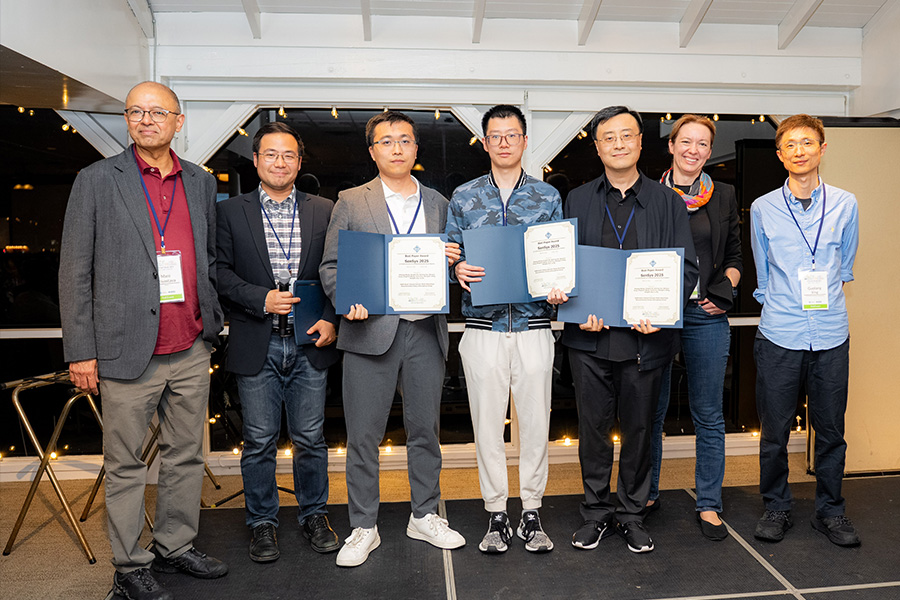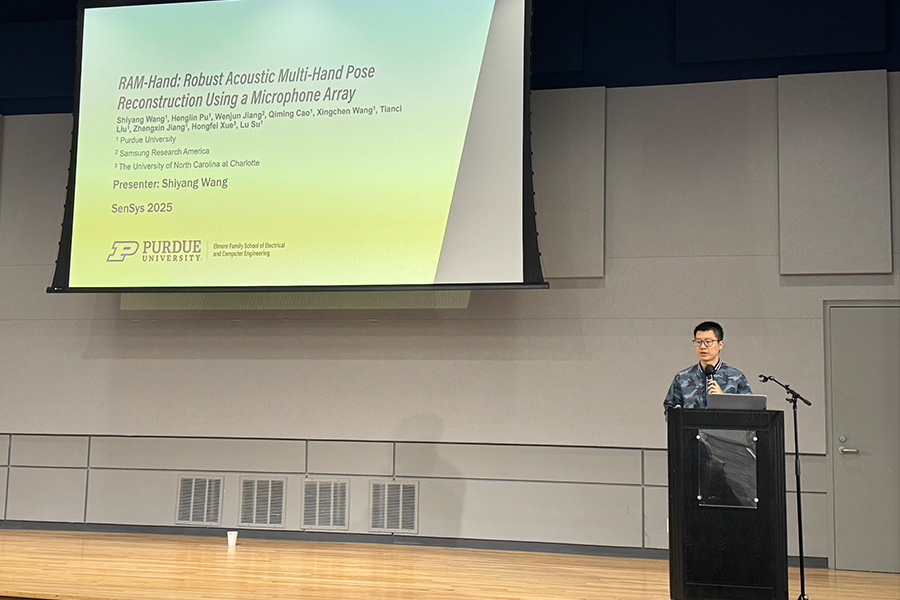Purdue ECE research team wins Best Paper Award at SenSys 2025

A research paper led by Purdue University's Elmore Family School of Electrical and Computer Engineering has received the prestigious Best Paper Award at the 2025 ACM Conference on Embedded Networked Sensor Systems (SenSys).
The award-winning paper, titled RAM-Hand: Robust Acoustic Multi-Hand Pose Reconstruction Using a Microphone Array, was presented at the conference by first author Shiyang Wang, a PhD student in the lab of Lu Su, associate professor of ECE.
Unlike traditional systems that rely on cameras or wearable devices to track hand movements, RAM-Hand uses sound. By analyzing acoustic signals reflected off human hands, the system can detect the shape and position of multiple hands at once—all without requiring users to wear any devices or compromise their privacy.
“This technology is non-intrusive, privacy-preserving, and computationally efficient,” Su said. “It works well in a variety of environments and requires very little training data to adapt to new users or hand configurations.”
At the core of RAM-Hand is a custom signal processing pipeline integrated with a transformer-based machine learning model. To boost accuracy and adaptability, the team also applied data augmentation and a technique called contrastive learning. The result: a system that can pinpoint hand joint positions with an average error of just 10.71 millimeters.

SenSys, now in its 23rd year, is a premier international forum sponsored by ACM SIGMOBILE and SIGBED. It focuses on smart and connected sensing systems, attracting cutting-edge work from across academia and industry.
Su says this paper was chosen as the best from among 244 submissions.
“This recognition from the SenSys community is a strong validation of our work,” he said. “It reflects the excellence and creativity of our students and the strength of Purdue ECE’s research in smart sensing systems.”
RAM-Hand could have wide-ranging applications, from gesture-based controls and virtual reality to robotics and health monitoring—offering a new path forward in human-computer interaction using sound.
